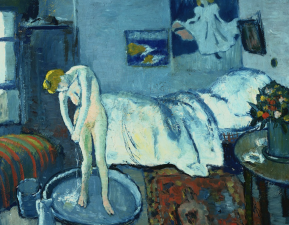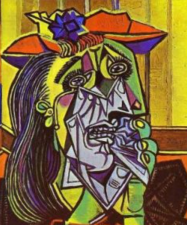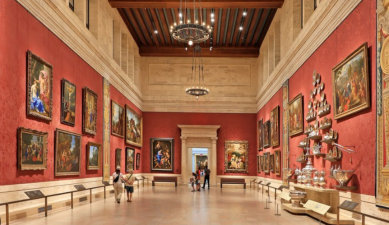How Do You Tell a Real Picasso From a Fake One?
As a pivotal figure in modern art history, Picasso's works are priceless, and many forgeries exist on the market. Therefore, accurate authentication of Picasso's works is crucial.
As a pivotal figure in modern art history, Picasso's works are priceless, and many forgeries exist on the market. Therefore, accurate authentication of Picasso's works is crucial.
Style Analysis
Picasso's style is unique and varied, with distinct characteristics in different periods.
Blue Period (1901-1904)

- The dominant color in his works during this period is blue, and themes such as poverty and loneliness are often depicted. For example, in "The Old Guitarist," the figure is thin and melancholic, against a dark background. The overall color scheme is unified by a blue hue, and the brushstrokes are delicate and convey a sense of melancholy. When authenticating, attention should be paid to whether the painting's dominant color palette is blue, whether the figure's modeling aligns with the period's characteristic thinness and melancholy, and whether the brushstrokes are delicate and convey a sense of oppression.
Rose Period (1904-1906)

- The color palette shifts to a warm rose, and the subjects depicted are often circus figures. The images are more cheerful, as in "Woman with a Fan," with soft faces and predominantly pink and red colors, creating a warm and inviting feeling. To identify works from the Rose Period, one must examine whether the colors are primarily rose-hued, whether the figures' expressions and postures display joy and liveliness, and whether the brushstrokes are lighter and more fluid compared to those from the Blue Period.
Cubism Period (1907-1914)

- This is Picasso's most iconic stylistic phase. Objects are broken down and reassembled to present multi-angle forms. For example, in "Les Demoiselles d'Avignon," the figures are geometrically manipulated, breaking with traditional concepts of pictorial space and form. The key to identifying Cubist works is whether the composition of geometric shapes is evident, whether the objects are broken down and reconstructed from multiple angles, and whether the use of color supports this geometric expression.
Painting Technique Research
- Brushstroke Characteristics
Picasso's brushstrokes varied across different periods. The Blue Period's delicate brushstrokes were used to portray the figures' melancholy expressions; the Rose Period's brushstrokes were lighter and more fluid, outlining the figures' cheerful postures; and the Cubist period's brushstrokes were bolder and more forceful, complementing the geometric forms. For example, in Cubist works, brushstrokes often use short, crisp lines to depict the various sides of an object, creating a unique texture. When evaluating artworks, carefully observe the brushstrokes' form, direction, strength, and degree of integration with the composition of the painting.
- Color Usage Patterns
Each period has its own unique color palette. The Blue Period featured deep, monotonous colors, reinforcing a melancholic atmosphere; the Rose Period featured bright, warm colors, conveying a cheerful mood; the Cubist Period employed relatively rich colors, but emphasized the coordination of colors and geometric shapes. For example, in Rose Period works, warm tones such as pink and red interweave to create a warm and romantic atmosphere. When evaluating artworks, analyze whether the color combination is consistent with the characteristics of the period, whether the color layers are rich and harmonious, and whether the colors are consistent with the theme.
- Composition Styles
Compositions vary across different periods. The Blue Period often employed more traditional compositions, with figures taking center stage; the Rose Period featured more lively compositions, with figures in various poses; and the Cubist Period employed unconventional compositions, combining objects from multiple angles. For example, the placement of the figures in "Girl Playing the Mandolin" and their relationship to the surrounding environment demonstrate the dynamic composition of the Rose Period. When evaluating a painting, attention should be paid to the layout of the elements, the relationship between primary and secondary elements, and whether there is a unique spatial treatment, and whether it conforms to the compositional characteristics of the corresponding period.









